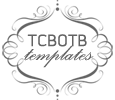Halloween is
such a cool opportunity to make awesome, spooky music with children. It’s
always one of my favorite times of the year! It’s also conference month, which
means we always end up with a week of weird schedules and half-days. It can be
hard to find a lesson that is engaging but also enrichment. Spooky books are a great
solution. We try to stay away from things that are exclusively Halloween and do
spooky things instead, so all students can participate. Last year, the kids hada blast with the Bill Martin Jr/Eric Carle book A Ghost Story. This year, we
are exploring another Bill Martin Jr. book: A Spooky Story.
The book, the cards I use to help students remember their character, and a few of the instruments kids commonly choose.
This book is
a very formulaic counting book. “Out of the shadows, out of the flum,” is
followed by a number of spooky characters including a cat, witches, skeletons,
and werewolves. The end of the book has those characters doing several things
like wailing and turning, and we use that as an opportunity to crescendo. The
characters finally go back into the flum, a good opportunity for a decrescendo.
Inevitably,
a kid always asks, “What is flum?” Because the author made it up, kids use
context clues to decide what exactly the flum is. Usually kids decide it is
some kind of home world or portal for the spooky characters. Yay
cross-curricular opportunities!
We begin by
reading the book a few times, until the kids can identify the form of the book.
We then add in D and F on tone bars to lay a spooky, minor sound blanket over
the story. Students choose instruments for “shadows,” “flum,” and each of the
10 characters. This is a great way for students to explore instruments they don’t
get to play very frequently like the ratchet, the thunder tube, and my piano. It’s
also good practice to model the correct way to choose an instrument to fit a
theme or character. My kids are always tempted to choose an instrument just
because they like it, not because it is the best choice for the sound they
want. So we go over the fact that we may love the bell tree because it sounds like
Tinker Bell, but it’s probably not be the best choice for a spooky werewolf.
Students play through the book several times, switching instruments each time. I have cards for each of the characters so they don’t forget who they are. One student also serves as the narrator and reads the book. When the kids are ready, we record. Kids get very excited about sending a recording to their teacher, and beg me to play it for the kindergarteners to see if it scares them. You could very easily have kinder classes choose the spookiest recording.
Hope you
have a spooky time with this fantastic book!




































